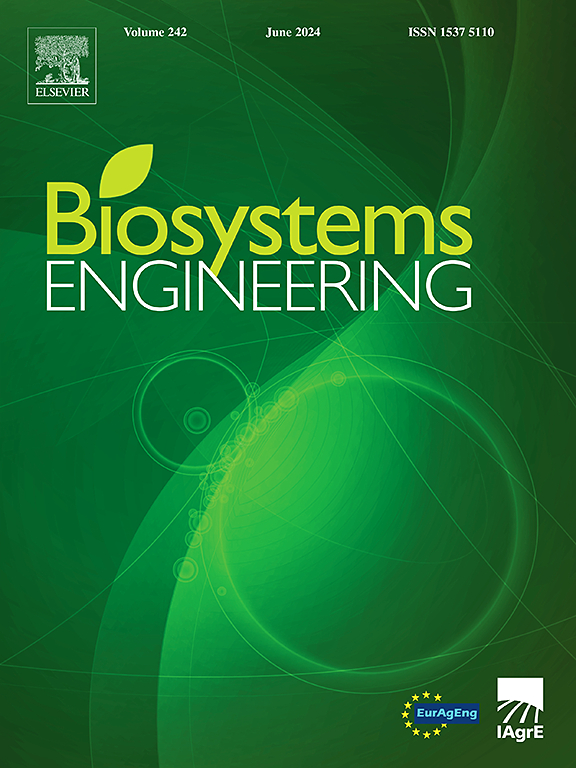Improved feed-forward neural network and multidimensional motion data for accurate recognition of sheep behaviour at multiple fattening stages
IF 5.3
1区 农林科学
Q1 AGRICULTURAL ENGINEERING
引用次数: 0
Abstract
The behavioural characteristics of Hu sheep are closely linked to their health status. This study focuses on Hu sheep at various fattening stages to explore the role of machine learning in the recognition of multidimensional motion signals and links to sheep behaviour. Multidimensional motion sensors were employed to collect movement data, such as acceleration and angular position from the necks of sheep. Independent sample t-tests were conducted to analyse the temporal distribution differences in sheep behaviours, whilst one-way analysis of variance (ANOVA) was utilised to compare motion data across different behaviours. Factor Analysis (FA) was employed as a dimensionality reduction method whilst retaining relevant motion data and features. An artificial neural network model based on the whale optimisation algorithm (WOA) was established using both the raw and feature dataset, and its performance was compared with other models. The t-test results demonstrated significant differences in the temporal distribution of sheep behaviours at different fattening stages (p < 0.05), while ANOVA revealed significant distinctions among the majority of behavioural data (p < 0.05). The motion data and feature retained through FA effectively preserved key information regarding sheep movement, reducing dimensional redundancy while ensuring the classification efficacy of the model. The integration of WOA with the feature dataset addressed the issue of overfitting and achieved an accuracy of 95.52 %, which is an improvement of 19.04 % compared to traditional models. This research provides a high-precision and high-stability behavioural recognition model for Hu sheep, offering a methodological framework for achieving precise health assessments.
改进的前馈神经网络和多维运动数据用于准确识别绵羊在多个育肥阶段的行为
湖羊的行为特征与其健康状况密切相关。本研究以不同育肥阶段的湖羊为研究对象,探讨机器学习在多维运动信号识别中的作用及其与羊行为的联系。采用多维运动传感器采集羊颈部加速度、角度位置等运动数据。独立样本t检验用于分析绵羊行为的时间分布差异,而单向方差分析(ANOVA)用于比较不同行为之间的运动数据。在保留相关运动数据和特征的同时,采用因子分析(FA)作为降维方法。利用原始数据集和特征数据集建立了基于鲸鱼优化算法(WOA)的人工神经网络模型,并与其他模型进行了性能比较。t检验结果显示,不同育肥期绵羊行为的时间分布差异显著(p <;0.05),而方差分析揭示了大多数行为数据之间的显著差异(p <;0.05)。通过FA保留的运动数据和特征有效地保留了羊运动的关键信息,在保证模型分类效果的同时减少了维数冗余。WOA与特征数据集的融合解决了过拟合问题,准确率达到95.52%,比传统模型提高19.04%。本研究为湖羊提供了高精度、高稳定性的行为识别模型,为实现精确的健康评估提供了方法学框架。
本文章由计算机程序翻译,如有差异,请以英文原文为准。
求助全文
约1分钟内获得全文
求助全文
来源期刊

Biosystems Engineering
农林科学-农业工程
CiteScore
10.60
自引率
7.80%
发文量
239
审稿时长
53 days
期刊介绍:
Biosystems Engineering publishes research in engineering and the physical sciences that represent advances in understanding or modelling of the performance of biological systems for sustainable developments in land use and the environment, agriculture and amenity, bioproduction processes and the food chain. The subject matter of the journal reflects the wide range and interdisciplinary nature of research in engineering for biological systems.
 求助内容:
求助内容: 应助结果提醒方式:
应助结果提醒方式:


